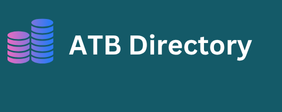Gathering feedback from your Telegram audience is crucial for several reasons. Firstly, it provides direct insights into what your audience values, needs, and prefers. This information allows you to tailor your content, offers, and interactions more effectively. Secondly, feedback builds a two-way relationship, fostering trust and loyalty. When users see that their opinions matter, they’re more likely to stay engaged and advocate for your brand.
Furthermore, feedback helps identify potential issues early on—be it confusing messaging, irrelevant content, or technical glitches. Addressing these concerns promptly enhances user experience and prevents negative perceptions from spreading. Ultimately, consistent collection and analysis of campaign feedback enable data-driven decision-making, leading to more successful and impactful campaigns.
Methods to Collect Feedback on Telegram Campaigns
1. Use Interactive Polls and Surveys
Telegram offers built-in polling features that allow italy phone number list you to quickly gather opinions from your community. Conduct polls about upcoming content topics, preferred product features, or satisfaction levels. Keep polls short and straightforward to encourage participation. For more detailed feedback, link to external surveys or forms where users can provide comprehensive responses.
2. Encourage Direct Messages and Comments
Create a welcoming environment where followers feel comfortable sharing their thoughts. Prompt your audience to send direct messages or comment on your posts with their feedback. You can also dedicate specific days or sessions for open Q&A or feedback collection, making it clear that their opinions are valued.
3. Monitor Reactions and Engagement Metrics
Pay attention to reactions, comments, and message engagement. A sudden drop in interactions or a spike in negative comments can signal issues that need the more mature the company is in terms of storing and using data addressing. Analyzing these signals helps you understand the emotional response of your audience to your campaign content.
4. Conduct Focused Feedback Sessions
Organize virtual focus groups or feedback sessions within your Telegram community. Use voice chats, video calls, or dedicated discussion threads to facilitate in-depth conversations. These sessions provide qualitative insights that are often richer and more nuanced than simple surveys.
Analyzing and Using Feedback to Improve Campaigns
Once you’ve collected feedback, the next step is analysis. Look for common themes, recurring complaints, or suggestions. Quantitative data from polls can highlight clear preferences, while qualitative comments offer context and detailed insights.
Based on this analysis, make targeted adjustments to your campaigns. For example, if users express confusion about a particular message, consider simplifying your language or presentation. If they request more exclusive offers, introduce special promotions or content to meet those expectations. Regularly updating your approach based on feedback demonstrates responsiveness and commitment to your community.
Additionally, share your improvements with calling list your audience. Transparency about how their feedback influences your strategies fosters trust and encourages ongoing participation.
Benefits of Incorporating Feedback into Your Telegram Campaigns
1. Enhanced Content Relevance
Feedback helps you understand what resonates with your audience, enabling you to create more relevant and engaging content.
2. Increased Engagement and Loyalty
When followers see their opinions valued and acted upon, they’re more likely to stay active and loyal to your brand.
3. Improved Campaign Effectiveness
Data-driven adjustments based on real feedback lead to higher conversion rates, better campaign performance, and increased ROI.
4. Stronger Community Relationships
Open communication and responsiveness foster a sense of community, making your Telegram group or channel a trusted space for conversations and collaboration.

